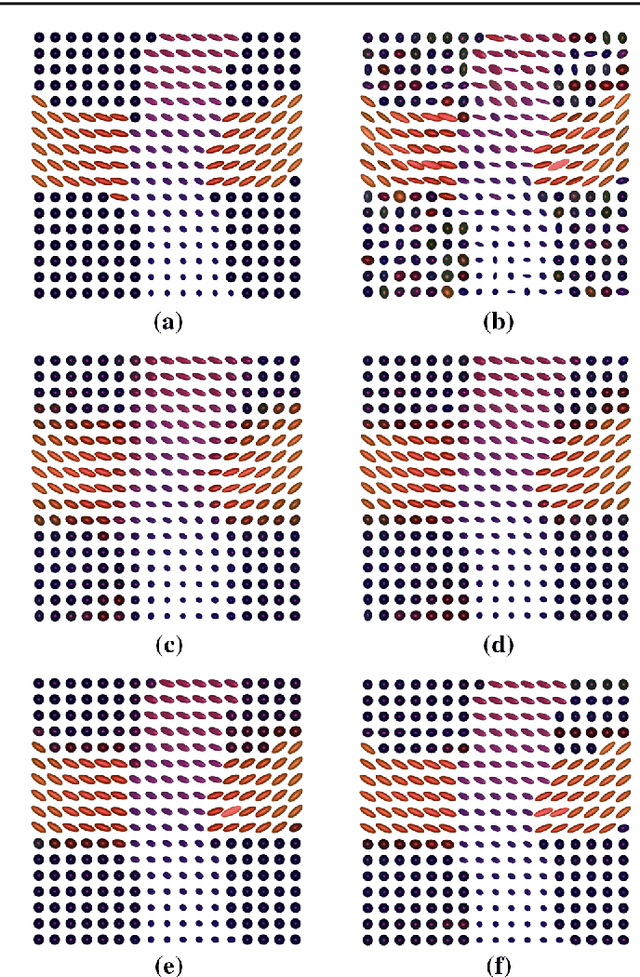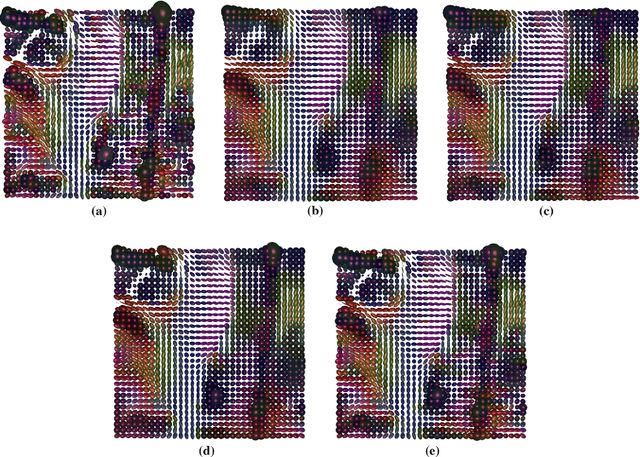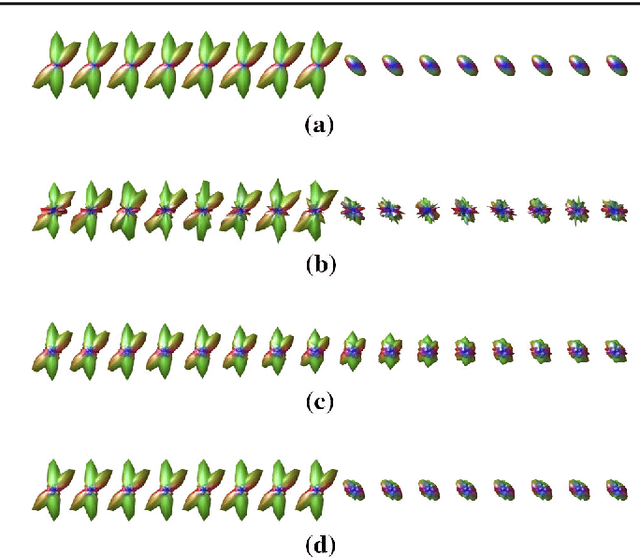Laurent Demaret
Mumford-Shah and Potts Regularization for Manifold-Valued Data with Applications to DTI and Q-Ball Imaging
Oct 07, 2014



Abstract:Mumford-Shah and Potts functionals are powerful variational models for regularization which are widely used in signal and image processing; typical applications are edge-preserving denoising and segmentation. Being both non-smooth and non-convex, they are computationally challenging even for scalar data. For manifold-valued data, the problem becomes even more involved since typical features of vector spaces are not available. In this paper, we propose algorithms for Mumford-Shah and for Potts regularization of manifold-valued signals and images. For the univariate problems, we derive solvers based on dynamic programming combined with (convex) optimization techniques for manifold-valued data. For the class of Cartan-Hadamard manifolds (which includes the data space in diffusion tensor imaging), we show that our algorithms compute global minimizers for any starting point. For the multivariate Mumford-Shah and Potts problems (for image regularization) we propose a splitting into suitable subproblems which we can solve exactly using the techniques developed for the corresponding univariate problems. Our method does not require any a priori restrictions on the edge set and we do not have to discretize the data space. We apply our method to diffusion tensor imaging (DTI) as well as Q-ball imaging. Using the DTI model, we obtain a segmentation of the corpus callosum.
Total variation regularization for manifold-valued data
Dec 30, 2013



Abstract:We consider total variation minimization for manifold valued data. We propose a cyclic proximal point algorithm and a parallel proximal point algorithm to minimize TV functionals with $\ell^p$-type data terms in the manifold case. These algorithms are based on iterative geodesic averaging which makes them easily applicable to a large class of data manifolds. As an application, we consider denoising images which take their values in a manifold. We apply our algorithms to diffusion tensor images, interferometric SAR images as well as sphere and cylinder valued images. For the class of Cartan-Hadamard manifolds (which includes the data space in diffusion tensor imaging) we show the convergence of the proposed TV minimizing algorithms to a global minimizer.
 Add to Chrome
Add to Chrome Add to Firefox
Add to Firefox Add to Edge
Add to Edge